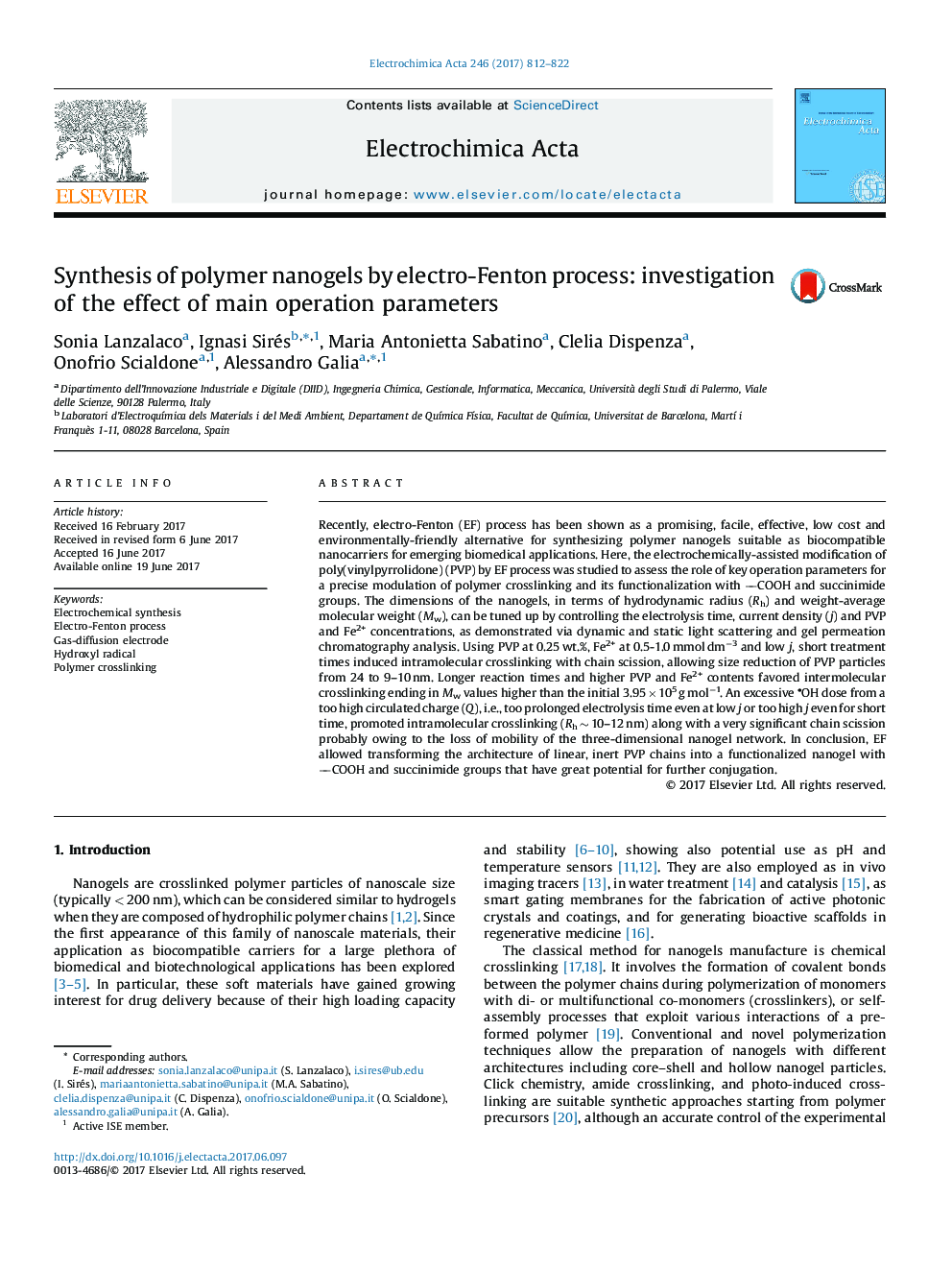| Article ID | Journal | Published Year | Pages | File Type |
|---|---|---|---|---|
| 6470618 | Electrochimica Acta | 2017 | 11 Pages |
â¢Synthesis of PVP nanogels by electro-Fenton: a facile, low cost, environmentally-friendly route.â¢In situ production of OH and HO2 based on H2O2 electrogeneration and Fe2+ addition.â¢Semi-dilute PVP, 0.5-1.0 mmol dmâ3 Fe2+, low j and short t: Rh < 10 nm (intramolecular crosslinking).â¢Longer t and higher PVP and Fe2+ contents: Mw increases (intermolecular crosslinking).â¢Functionalized PVP nanogels (COOH and succinimide groups): reactive groups for further modification.
Recently, electro-Fenton (EF) process has been shown as a promising, facile, effective, low cost and environmentally-friendly alternative for synthesizing polymer nanogels suitable as biocompatible nanocarriers for emerging biomedical applications. Here, the electrochemically-assisted modification of poly(vinylpyrrolidone) (PVP) by EF process was studied to assess the role of key operation parameters for a precise modulation of polymer crosslinking and its functionalization with COOH and succinimide groups. The dimensions of the nanogels, in terms of hydrodynamic radius (Rh) and weight-average molecular weight (Mw), can be tuned up by controlling the electrolysis time, current density (j) and PVP and Fe2+ concentrations, as demonstrated via dynamic and static light scattering and gel permeation chromatography analysis. Using PVP at 0.25 wt.%, Fe2+ at 0.5-1.0 mmol dmâ3 and low j, short treatment times induced intramolecular crosslinking with chain scission, allowing size reduction of PVP particles from 24 to 9-10 nm. Longer reaction times and higher PVP and Fe2+ contents favored intermolecular crosslinking ending in Mw values higher than the initial 3.95 Ã 105 g molâ1. An excessive OH dose from a too high circulated charge (Q), i.e., too prolonged electrolysis time even at low j or too high j even for short time, promoted intramolecular crosslinking (Rh â¼Â 10-12 nm) along with a very significant chain scission probably owing to the loss of mobility of the three-dimensional nanogel network. In conclusion, EF allowed transforming the architecture of linear, inert PVP chains into a functionalized nanogel with COOH and succinimide groups that have great potential for further conjugation.
Graphical abstractDownload high-res image (76KB)Download full-size image
